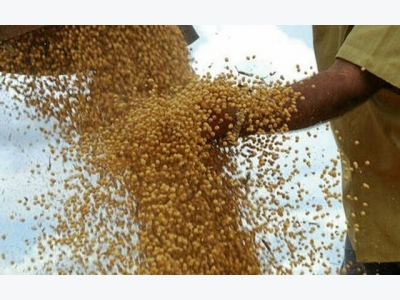US soybean farmers aim for sustainability in aquaculture feed

Farmers looking to cut environmental impacts to make soy fish feed even more sustainable.
Replacing fish feed with soy feed isn't a new concept -- there are 15.5 million metric tons of soy used in fish farming, according to Andy Tauer of the Soy Aquaculture Alliance -- but lately, the US Soybean Export Council (USSEC) and other similar organizations are pushing to ensure that fish farmers who are using soy can be assured that it is indeed a more sustainable alternative.
At the USSEC Aquaculture Investment Workshop this week in Panama City, the council's Will McNair said an ever-growing consumer expectation of sustainable products -- 75 percent of Fortune's Global 500 companies publish sustainability reports, for example -- is pushing the US soybean industry to also get on board.
Just this week, USSEC announced that the US Soybean Sustainability Assurance Protocol (SSAP) was given the thumbs-up by the Global Aquaculture Alliance's (GAA) Best Aquaculture Practices (BAP).
SSAP, a third-party sustainability certification, can help fish farmers "meet consumers' growing sustainability demands," McNair said.
In the past three and a half decades, there's been a massive reduction in resource impacts to produce soybeans in the United States, he said. From 1980 to 2011, there's been a 35 percent decrease in land acres used to produce soybeans, a 66 percent decrease in soil erosion in tons, a 42 percent decrease in irrigation water applied and a 49 percent decrease in greenhouse gases used in pounds. In contrast, there's been a 55 percent increase in crop yields.
US soybean farmers are aiming to cut their impacts even more in the coming decade, McNair explained.
Key soybean organizations have committed to reducing land impact by 10 percent, reduce soil erosion an additional 25 percent, increase energy use efficiency by 10 percent and decrease total greenhouse gas emissions by 10 percent.
Related news
 US Commerce Department found at fault in Vietnamese shrimp antidumping analysis
US Commerce Department found at fault in Vietnamese shrimp antidumping analysis Commerce Department made mistake in using wage rates from the Bangladeshi industry to value labor costs for Vietnam.
 What's behind the battle against farmed shrimp imports?
What's behind the battle against farmed shrimp imports? The Southern Shrimp Alliance (SSA) is working on behalf of US Gulf of Mexico shrimpers to get what they say is a fair deal on trade
 UK frozen seafood retail sales pick up for first time in months
UK frozen seafood retail sales pick up for first time in months UK retailers sold less seafood in the 52 weeks up to June 12, but sold it at a higher value, according to the latest data by market research company Nielsen.